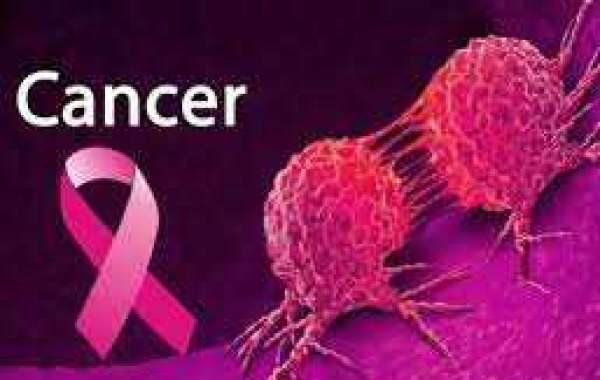Understanding Cancer: A Comprehensive Overview
Cancer is a complex and multifaceted disease that affects millions of people worldwide. In this article, we will delve into the various aspects of cancer, including its causes, types, symptoms, diagnosis, treatment options, and prevention strategies.
What is Cancer?
Cancer is a group of diseases characterized by the uncontrolled growth and spread of abnormal cells in the body. These cells can invade nearby tissues and organs, disrupting their normal function. If not treated early, cancer can metastasize, spreading to other parts of the body and potentially becoming life-threatening.
Causes of Cancer
While the exact cause of cancer is not always clear, certain factors can increase the risk of developing the disease. These risk factors include:
Genetic Mutations: Mutations in certain genes, such as tumor suppressor genes or oncogenes, can lead to abnormal cell growth and increase the risk of cancer.
Environmental Factors: Exposure to carcinogens, such as tobacco smoke, ultraviolet (UV) radiation, asbestos, and certain chemicals, can increase the risk of developing cancer.
Lifestyle Choices: Unhealthy lifestyle habits, such as smoking, excessive alcohol consumption, poor diet, lack of physical activity, and obesity, can contribute to the development of cancer.
Types of Cancer
There are more than 100 different types of cancer, each classified based on the type of cells affected and their location in the body. Some common types of cancer include:
- Breast Cancer
- Lung Cancer
- Prostate Cancer
- Colorectal Cancer
- Skin Cancer (Melanoma)
- Leukemia
- Lymphoma
- Pancreatic Cancer
Symptoms of Cancer
The symptoms of cancer vary depending on the type and stage of the disease. However, some common signs and symptoms may include:
- Unexplained Weight Loss
- Fatigue
- Persistent Pain
- Changes in Bowel or Bladder Habits
- Skin Changes
- Sores That Do Not Heal
- Difficulty Swallowing
- Persistent Cough or Hoarseness
It is important to note that many of these symptoms can also be caused by other non-cancerous conditions. However, if you experience any persistent or concerning symptoms, it is essential to consult a healthcare professional for further evaluation.
Diagnosis and Screening
Early detection plays a crucial role in the successful treatment of cancer. Various screening tests and diagnostic procedures may be used to detect cancer or identify individuals at high risk of developing the disease. Some common screening tests include:
- Mammograms (for Breast Cancer)
- Colonoscopies (for Colorectal Cancer)
- Pap Smears (for Cervical Cancer)
- Prostate-specific Antigen (PSA) Test (for Prostate Cancer)
- Skin Biopsies (for Skin Cancer)
In addition to screening tests, diagnostic procedures such as imaging scans (e.g., X-rays, CT scans, MRI scans) and biopsies (tissue samples) may be performed to confirm the presence of cancer and determine its stage and extent.
Treatment Options
The treatment for cancer depends on various factors, including the type and stage of the disease, as well as the individual's overall health and preferences. Some common treatment options include:
Surgery: Surgical removal of cancerous tumors or tissues may be performed to eliminate localized cancer or reduce tumor size.
Chemotherapy: Chemotherapy involves the use of drugs to kill cancer cells or prevent them from growing and dividing.
Radiation Therapy: Radiation therapy uses high-energy rays or particles to destroy cancer cells or shrink tumors.
Immunotherapy: Immunotherapy works by stimulating the body's immune system to recognize and attack cancer cells.
Targeted Therapy: Targeted therapy targets specific molecules or pathways involved in cancer growth and progression.
In many cases, a combination of these treatment modalities may be used to achieve the best possible outcome.
Prevention Strategies
While not all cancers can be prevented, there are steps individuals can take to reduce their risk of developing the disease:
Avoid Tobacco: Tobacco use is the leading cause of preventable cancer deaths worldwide. Avoiding tobacco products and exposure to secondhand smoke can significantly reduce the risk of developing cancer.
Maintain a Healthy Lifestyle: Adopting a healthy lifestyle, including eating a balanced diet, exercising regularly, maintaining a healthy weight, and limiting alcohol consumption, can help reduce the risk of cancer.
Protect Against UV Radiation: Protecting your skin from the sun's harmful UV rays by wearing sunscreen, protective clothing, and seeking shade can help prevent skin cancer.
Get Vaccinated: Vaccines are available to prevent certain types of cancer, such as human papillomavirus (HPV) vaccines to prevent cervical cancer and hepatitis B vaccines to prevent liver cancer.
Attend Screening Tests: Participating in regular cancer screening tests can help detect cancer early when it is most treatable.
Conclusion
Cancer is a formidable disease that impacts millions of lives worldwide. Understanding its causes, types, symptoms, diagnosis, treatment options, and prevention strategies is essential in the fight against cancer. By raising awareness, promoting early detection, and advocating for healthy lifestyles, we can work together to reduce the burden of cancer and improve outcomes for those affected by the disease.








